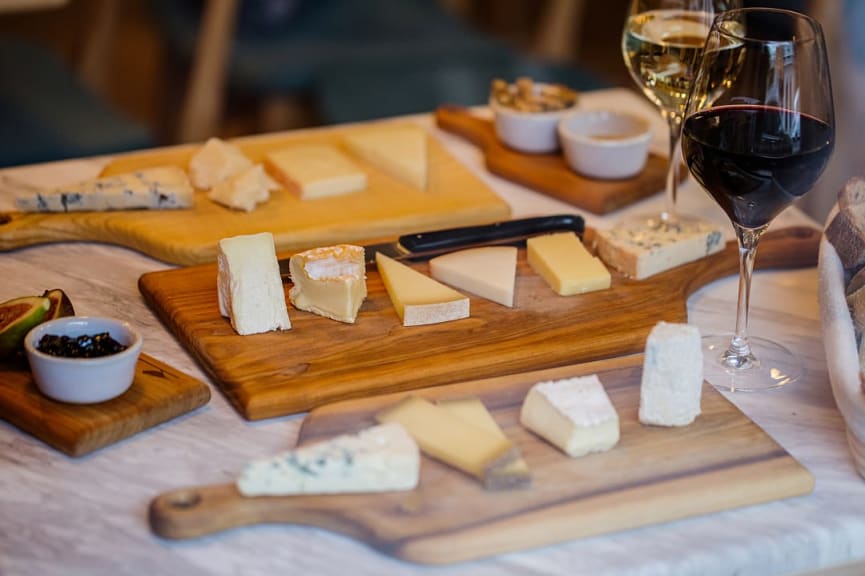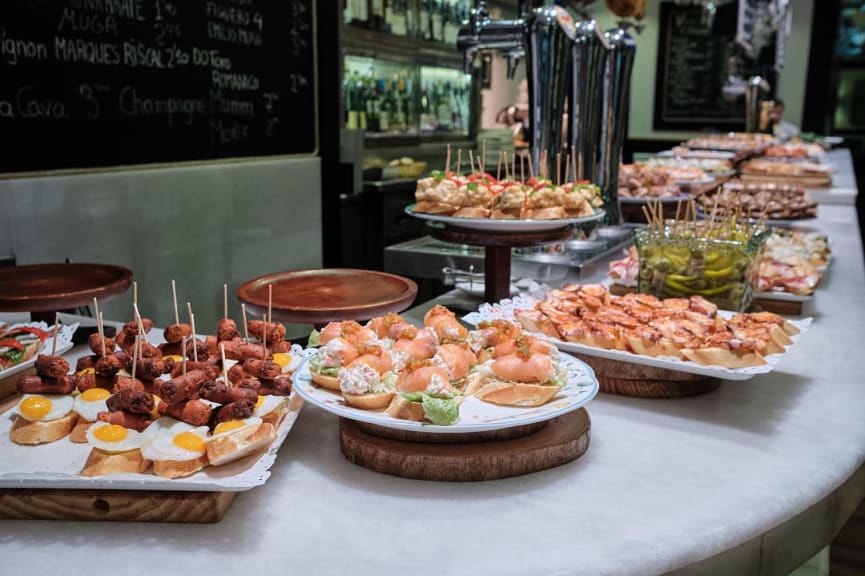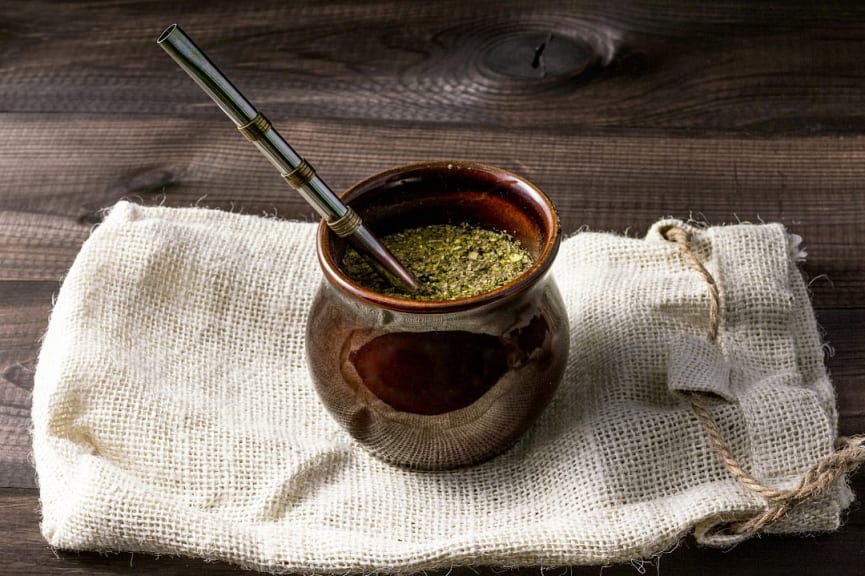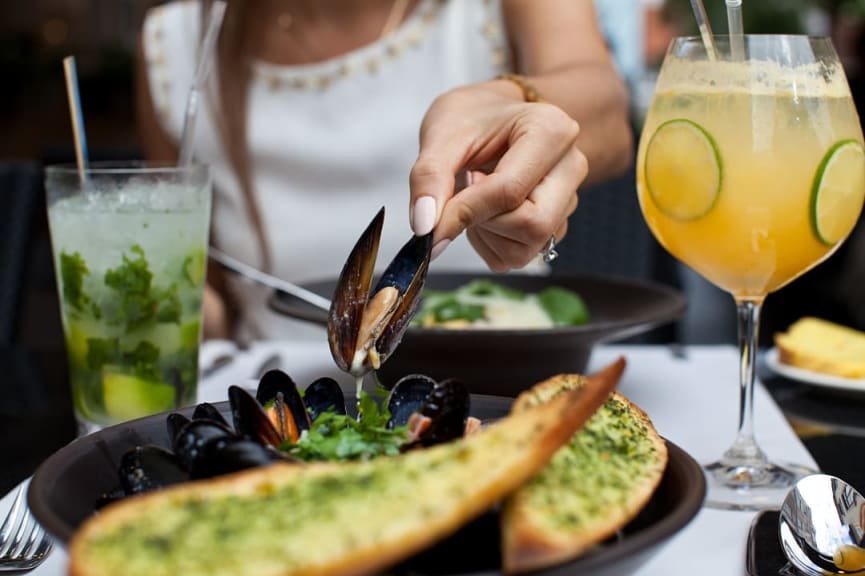Top 8 Food Cultures to Discover Around the World

Gauchos preparing asado. Photo courtesy of Visit Argentina
Our list of eight food cultures focuses on the etiquette associated with a cuisine, highlighting the importance of tradition and heritage you can enjoy during your custom-tailored trip.
Dining in a foreign country goes beyond knowing when to use certain utensils or your hands, and instead encompasses the very tenets of the cuisine, highlighting historic flavors, customary cooking methods, personal values, and the decorum associated with the kitchen and dining room.
Dining experiences around the world awaken the senses, from the texture of a dish to the aromas, visual aesthetics, or tastes. Find ideas on where you can visit on your next trip to experience the world’s culinary cultures.
1. Italy

Pasta in Venice, Italy
Italian dining culture is renowned around the world for its connection to life’s pleasures. Certain rules, such as never ordering a cappuccino after noon or refraining from ordering extra cheese as it can be seen as offensive to the chef, are well known.
The true art of Italian dining etiquette, however, becomes apparent in the leisurely pace of service and the respect Italian chefs and customers give their food. With a focus on accentuating the specific flavors of each item used, minimal ingredients are added to each dish, keeping things simple, yet complex in flavor, perfectly proportioned, and undeniably delicious.
When dining in Italy, it is customary to place the most important person in the party in the middle of the table. When your cutlery is down, your hands should be visible at all times, your wrists resting on the edge of the table. We all love it when bread is placed on the table, but do not be surprised if you are not offered butter as olive oil is usually provided for dipping. Using your fork to twist your food into your mouth is not only reserved for eating pasta, but also for folding your lettuce and taking a bite, never cutting it with a knife.
Learn more: Italy Food Tours & Vacation Packages • Italy Food & Wine Travel Guide
2. Japan

Outdoor dining during Hanami in Kyoto, Japan
Japan is known for its reliance on and connection to etiquette that supports a civilized and courteous society that believes good manners demonstrate respect. The various components of Japanese dining etiquette rely on the different contexts of a meal, as dictated by different dining occasions. During a formal dining engagement, a Japanese diner will sit on a reed mat in a kneeling position, while sitting cross-legged during a casual dining experience is usually the norm.
No matter what the ingredients or what time of year you enjoy them, in Japan, extreme attention to detail and immense pride go into the creation of each dish. Japanese cuisine often looks deceptively simple, but side sauces and additional flavors like wasabi or ginger add diversity when used in small quantities, ensuring the seasoning comes through clearly.
The initial joys of Japanese cuisine stem from a simple act of gratitude before the meal. Saying itadakimasu before eating, which translates to “I gratefully receive”, shows respect to those who have made and served the food. This appreciation establishes a comfortable and lasting environment, allowing the host, servers, chefs, and guests to indulge in the pleasures of the experience. And do slurp that soup - contrary to Western beliefs, it is indeed a sign of gratitude.
Learn more: Japan Food Tours & Vacations • Japan Travel Guide
3. Morocco

Tagine from a street vendor in Morocco
When you think of Moroccan cuisine, spices, meats, and vegetables all combined to create delectable dishes surely come to mind. With culinary masters coming from the royal cities of Fez, Meknes, Marrakech, and Rabat, Moroccan cuisine reflects the country’s rich history, with lamb and chicken the featured ingredients. The most famous of Moroccan dishes is the tagine, a slow-cooked stew named for the traditional, conical-shaped clay dish in which it is traditionally cooked, scooped up with bread and served with couscous.
No matter where you dine in Morocco, Berber culture shines through, with ingredients such as olives and figs still used today. Over the years, other countries have influenced Moroccan cuisine, with Spanish and Arabian flavors and ingredients incorporated into dishes and techniques such as pickling and preservation deriving from Jewish tradition. Savor each bite and relive centuries-old traditions.
The main meal is enjoyed at midday, except during the holy month of Ramadan, the spread on offer seemingly neverending. Guests are encouraged to always wash their hands before dining, mostly due to food being eaten by hand, your right hand only, dishing up from a communal plate. Good to know is that should you realize you have had enough to eat, it is polite to continue nibbling as once one person stops eating, the rest of your guests at the table will follow suit. Enjoy a soothing cup of sweet mint tea to round off your dining experience.
Learn more: Morocco Tours & Vacations • Morocco Travel Guide
4. France

Cheese platter in Lyon, France. Photo courtesy of JurnalFutografic / Lyon Tourisme
Eating is central to French culture and has resulted in a plethora of rules meant to respect guests, hosts, chefs, and servers. Many date back to Louis XIV, but have since become common dining customs. The average French citizen spends more than 45 minutes at lunch each day, a reflection of the importance of savoring your food and finding the delicate flavors of each dish during a meal.
The importance of different courses and taking the time to appreciate the array of options in a starter, main, dessert, and cheese platter highlight the importance of the culinary arts in French culture and its ability to bring people together. Portion sizes are often smaller, which makes it easier to finish each one and allows the diner to enjoy every bite.
A slow meal in France symbolizes life’s pleasures. Whether in a private home or at a chic restaurant, beauty stems from elegance. For instance, the simple idea of a well-set table, according to French culinary custom, has the desired effect of slowing down a meal so family members, dinner guests, or restaurant patrons better appreciate it.
Learn more: Food & Wine Tours in France • France Travel Guide
5. Spain

Pintxos in San Sebastian, Spain
The Mediterranean diet takes center stage in Spain. With typical ingredients, as well as customary cooking methods, the traditions around dining play an important role in establishing the culinary experience, demonstrating the importance of different food cultures. From the typical light breakfast of coffee with frothy milk paired with sweet rolls or toast to small plates known as tapas or pintxos, depending on the region, food culture in Spain is as much about the experience as the flavor.
Tapas are known for their diversity and the opportunity to sample a number of dishes, but more importantly, dining on tapas is about meeting with friends to enjoy the company and the meal. Dinner is often later in the evening, a light meal generally eaten between nine and midnight.
With such a strong emphasis on local ingredients and traditionally strong flavors paired with a social atmosphere, it is easy to understand how Spain’s restaurants host more than 250 Michelin stars and are often among the world’s 50 best restaurants. Chefs focus on seasonal freshness, cheeses, and species historical to the Iberian Peninsula. Food is an essential part of daily life in Spain, making culinary culture not only important for making connections, but an inextricable part of the local cultural experience.
Learn more: Food & Wine Tours in Spain • Spain Travel Guide
6. Argentina

Yerba mate tea
The importance of beef in the Argentinian diet is as ubiquitous as pasta in the nourishment of an Italian, the presence thereof on the Argentinian dining table stemming from colonial history. Under Spanish rule, conquistadors brought cattle to the New World in the 16th century and it became a source of wealth and sustenance for locals, creating a deluge of legends celebrating gauchos and the pampas.
Some respected customs at the dinner table encourage Argentines and visitors to wait for the host to say “buen provecho” before eating and ensuring a toast has been made before taking a sip of wine. You don’t need to be right on time for your dining engagement either, arriving a half hour late is quite normal. Resting your hands on the table during the meal and leaving a little food on your plate is customary too, while pouring your own wine should be avoided because of the myriad rituals and rules involved.
Sharing a gourd of yerba mate tea, passed from person to person and enjoyed through a long metal straw called a bombilla, is considered a friendship ritual and references the culinary heritage of indigenous Argentina, which has survived the onslaught of European influences for five centuries. The ritual is hardly ever practiced in restaurants, but partaking in the mate gourd tradition represents the important values of Argentina - sharing and friendship - and subtly encourages national comfort.
Learn more: Argentina Tours & Vacations • Argentina Travel Guide
7. Australia

Small bites in Sydney, Australia
The country is a melting pot of cultures from all over the world, with certain restaurants offering a specific cuisine, such as pizza and sushi. However, there are a couple of dishes and traditions that are favorites. From starting with a “cheers” when toasting to enjoying much-loved Vegemite on toast, Australians love to eat and socializing is a huge part of the dining experience.
Key points when dining out include remembering that the head of the table is the place of honor, with others seated on either side. When dining formally, the passing of dishes is done to your left and when you are finished eating, placing your knife and fork parallel on the right side of your plate will let everyone know you are done. When you are not eating, keep your hands off the table and on your lap, and try not to talk business, keeping the ambiance light and enjoyable.
Enjoy an Aussie meat pie, hugely popular and the quintessential Australian treat. Grilled or fried barramundi is another favorite, its name in the Aboriginal language meaning “large-scaled river fish”. If you attend a traditional barbeque, nibble on snags, which are beef or pork sausages, enjoyed with spices and sauces on a bed of mashed potatoes, topped with fried onions. To top off an Aussie night out, indulge in their famous pavlova. While the debate still lingers as to whether this is an Australian or New Zealand invention, the flavors and satisfaction after a few bites will linger longer.
Learn more: Australia Tours & Vacations • Australia Travel Guide
8. Thailand

Sharing a meal in Thailand
From respecting the flavor of each ingredient to showing appreciation for the chef in a private kitchen or restaurant, Thailand’s food culture is centered on balance. Its seasonings teeter between salty, sweet, sour, and spicy, while also showing influence from a history of trade with India, China, and Portugal. This results in unique dishes.
Food is not simply about satiation in Thailand, it’s a social occasion celebrating luck and community, with dining alone considered bad luck in Thai food culture. When dining with locals, senior women generally order dishes for the entire table, often choosing several meats or fish, vegetables, and a dish or two someone in the party may have hinted at wanting to try. With so many dishes on the table at once, it’s easy for people with dietary restrictions to simply not reach for something that may not agree with them or politely decline if offered a taste.
Rice is a staple across Thailand, but the region you are visiting may serve it differently. For example, central and southern Thailand generally serve white rice at every meal, while northern Thailand favors sticky rice. Chopsticks are only used with standalone dishes with noodles, rather than rice-based dishes, and spoons are the most common utensil offered for any type of dish. When sticky rice is provided, it usually means you don’t need a utensil. Instead, diners are expected to compress the rice into a ball using only the fingers on their right hand, then use it to help scoop the food and sauces. Condiments are an essential part of the Thai dining experience and you are expected to add extra seasonings to spice up your dish, but make sure you avoid using your left hand and always wait for the highest-ranking person at the table to give the go-ahead to eat.
Learn more: Thailand Food Tours & Vacations • Thailand Travel Guide
Discover the World’s Food Cultures on Your Trip

Mussels dish served at a restaurant in Spain
While table manners may help you avoid embarrassment or offending someone during the meal, each country’s culture dictates that customs of dining can also enhance the particular flavors of the meal. What may seem ill-mannered in one culture may be the epitome of politeness in another, and being able to immerse yourself in local traditions is a tasty treat.
Discover a new culture and its cuisine by exploring our best food and wine tours and vacations or by finding new information in our food and wine travel guide.





